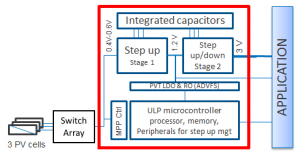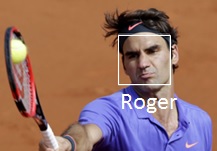BLISS - Battery-Less Identification System for Security
From iis-projects
Contents
Project Description
Recent advances in data processing techniques based on machine learning principles enable sophisticated embedded image and data analysis to be built into mobile platforms. While face recognition and object detection functionalities have already been successfully integrated in powerful devices like smartphones, the computational complexity as well as the significant power consumption prevent this technology to be exploited in small, wearable, battery-powered and autonomous devices.
In this project we want to tackle these limitations by combining smart energy harvesting techniques with ultra-low power (ULP) image sensors and embedded image processing. The ambitious goal is to build a self-sustainable system that allows simple image processing to be implemented on-board the device. This will enable face identification to be built into autonomous systems, which can be used in security and surveillance applications. Due to the complexity of the task, the project is split into 2 projects, which can possibly be combined in the end.
Track1: Smart energy harvestingWearable devices, such as smartwatches and activity trackers, are strongly limited by the available energy in their batteries. Charging devices is cumbersome and can be avoided by adding energy-harvesting capabilities to autonomously supply the device with power. Goal: Study the mechanisms of our state-of-the-art energy-harvesting chip (developed in-house) and develop an efficient control algorithm to extract as much power as possible from a set of attached solar cells. This includes intelligent adaption to changing lighting conditions, variable light distributions over the set of cells and adaptive dynamic voltage and frequency scaling (ADVFS) within the chip. The findings shall be implemented on a demonstrator platform and possibly on our solar smartwatch demonstrator. |
Track2: ULP camera with embedded processingConvolutional neural networks are the current state-of-the-art systems for many image processing applications like face recognition. They can achieve near-human performance in many vision tasks but consume significant amounts of power, which makes it hard to integrate them into small autonomous or battery-powered devices. Goal: Study the required components for building a miniature ultra-low power camera system and develop a demonstration platform based on our ULP image sensor chip (developed in-house). Then implement a simple neural network-based classifier onboard the demonstrator for identifying a face. In order to minimize the power consumption, efficient data handling shall be evaluated (e.g. image subsampling, temporal changes). |
Prerequisites
- Some experience in programming microcontrollers and developing PCBs
- Motivation to build a real systems
Detailed Task Description
The tracks can be chosen individually (1 or 2). A detailed task description will be worked out right before the project, taking the student's interests and capabilities into account.
Flyer
Status: Available (FS 2019)
- Looking for master/semester project students.
Organizational
- Supervision: Petar Jokic, Michele Magno
- Place of work: The project will be carried out at CSEM Zurich (in Technopark, next to Hardbrücke)
- Professor: Luca Benini

